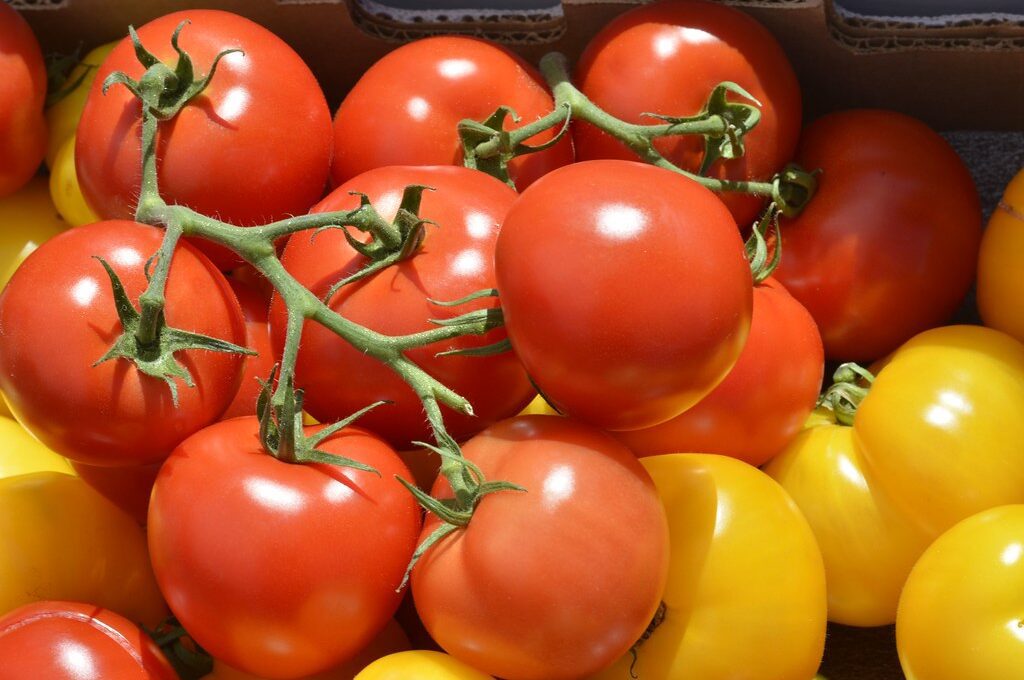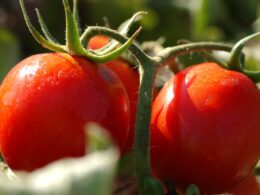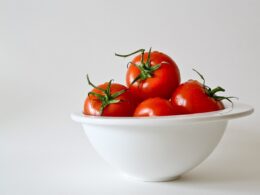You’ve finally decided to grow your own tomato plants, and you’re eager to see them flourish. But wait! Did you know that pruning your tomato plants can significantly impact their growth and yield? That’s right – proper pruning techniques not only help maintain the health of your plants but also ensure a bountiful harvest.
In this article, we’ll guide you through the process of pruning your tomato plants for maximum growth, so you can enjoy delicious and juicy tomatoes straight from your garden.
Don’t worry if you’ve never pruned a plant before; we’ve got your back. We will explain the different types of tomato plants, when to start pruning, how to identify which branches need trimming, and appropriate pruning methods – all while keeping an eye on the overall health and growth of your precious tomato plants.
So let’s dive in and learn how to provide your tomatoes with the care they need for a safe and fruitful growing experience!
Understand the Different Types of Tomato Plants
First, let’s dive into understanding the various types of tomato plants you’ll be working with to help them flourish. There are two main categories of tomato plants: determinate and indeterminate.
Determinate tomatoes, also known as bush tomatoes, have a predetermined size and will stop growing once they reach that size. They typically produce all their fruit at once, making them perfect for canning or preserving.
Indeterminate tomatoes, on the other hand, continue to grow and produce fruit throughout the season until frost kills them off. When it comes to pruning your tomato plants for maximum growth, knowing whether you’re dealing with determinate or indeterminate varieties is crucial.
For determinate tomatoes, minimal pruning is needed since these plants naturally control their own growth. You should only remove dead leaves or branches that may hinder airflow or sunlight penetration through the plant’s foliage.
Indeterminate varieties require more attention in terms of pruning because they continue to grow throughout the season. Now that you understand the difference between determinate and indeterminate tomato plants, it’s time to put that knowledge into practice when tending your garden.
By properly identifying your tomato variety and applying appropriate pruning techniques accordingly, you’ll be able to support healthy plant growth while maximizing fruit production for a bountiful harvest this season! Rest assured knowing that by following these guidelines tailored specifically for each type of plant in your garden, you will help ensure both safety and success in your gardening endeavors!
When to Start Pruning Tomato Plants
It’s crucial to begin pruning your tomato plants at just the right time for optimal results. Pruning too early or too late can have negative effects on the plant’s growth and yield. The best time to start pruning depends on the type of tomato plant you’re growing, its growth stage, and your specific gardening goals.
Here are five key points to consider when deciding when to start pruning your tomato plants:
-
Determinate vs. indeterminate: If you have determinate tomatoes (bush varieties), they require less pruning than indeterminate ones (vining varieties). Prune determinate types sparingly as they stop growing once they set fruit.
-
Plant maturity: Begin pruning indeterminate tomatoes after they reach about 12-18 inches tall since this is when they develop more side shoots and become bushier.
-
Goal-setting: If your goal is an earlier harvest, start pruning a bit earlier in the season; if a larger harvest is desired, hold off on significant pruning until later in the season.
-
Weather conditions: Keep an eye on weather patterns; warmer temperatures encourage faster growth, so you may need to start pruning sooner than expected.
-
Observation: Monitor your tomato plants regularly for signs of diseases or pests that may necessitate immediate attention and prompt trimming.
By taking these factors into account and keeping a close watch on your tomato plants’ development, you’ll be able to determine just when it’s time for that all-important first snip. Proper timing not only ensures maximum growth but also protects your precious crop from potential harm caused by disease or pests. So, arm yourself with knowledge and some trusty shears, and get ready to help those tomatoes thrive!
Identifying Which Branches to Prune
Now that you’re ready to start pruning, let’s figure out which branches should be trimmed for the healthiest and most bountiful harvest. Properly identifying the branches to prune will ensure your tomato plants grow strong, produce more fruit, and stay protected from diseases. To help you make the right decisions, we’ve broken down the main types of branches you’ll encounter on your tomato plants:
| Branch Type | Description |
|---|---|
| Suckers | Small shoots that grow between the main stem and a leaf branch. These can drain energy from fruit production if not pruned. |
| Diseased or Damaged Branches | Any branches showing signs of disease or damage need to be removed as soon as possible to prevent spreading or further weakening of the plant. |
| Lower Leaves/Branches | The bottom leaves and branches are more prone to soil-borne diseases due to their proximity to the ground; removing them will reduce this risk. |
First, focus on removing suckers – particularly those growing below the first flower cluster – as these can take away valuable resources from fruit production and lead to overcrowded plants with poor air circulation. When pruning suckers, it’s best to do it when they’re still young (2-4 inches) since they are easier to remove without causing damage.
Next, keep an eye out for any diseased or damaged branches throughout your plant’s growth cycle so you can quickly remove them before issues spread or worsen. Maintaining clean cuts while trimming will also minimize stress on your plant during this process. Lastly, don’t forget about those lower leaves and branches! They may not seem important at first but keeping them in check is crucial for protecting your precious tomato plants from potential harm.
So there you have it! By properly identifying and trimming suckers, diseased/damaged branches, and lower leaves/branches throughout your tomato plant’s life cycle, you’ll be well on your way to a healthier, happier, and safer garden. Remember that consistent pruning is key, so stay vigilant in your efforts and enjoy the bountiful harvest that follows!
Proper Pruning Techniques
Ready to master the art of pruning for a thriving garden? Let’s dive into proper techniques that’ll make all the difference!
First, always use clean, sharp scissors or pruning shears to avoid damaging your tomato plants and spreading diseases. To keep things safe, wear gardening gloves and be mindful of your fingers when making cuts.
When it comes to the actual pruning process, focus on removing suckers – those small shoots growing from the main stem’s base or at leaf joints. Gently pinch them off with your fingers or snip them with your shears, getting as close to the main stem as possible without harming it. For larger branches that need removal, cut at a slight angle away from the main stem to encourage healing.
Remember not to go overboard; only prune up to 30% of your plant at once so you don’t stress it out too much.
Keep an eye on your tomato plants throughout their growth cycle and regularly remove any yellowing leaves or unhealthy-looking branches. This will allow more air circulation and light penetration while keeping pests at bay – all essential elements in maintaining a safe and flourishing garden environment.
By following these simple yet effective pruning techniques, you’ll set yourself up for success in growing bountiful tomatoes!
How Does Pruning Tomatoes at Different Stages Affect Their Growth?
Pruning tomatoes at stage affects their growth significantly. Early pruning encourages stronger stems and better fruit production. Pruning at the vegetative stage allows for increased air circulation and sunlight exposure, resulting in healthier plants. Late-stage pruning redirects energy into ripening existing fruit rather than producing new growth.
Monitoring Plant Health and Growth
Feeling eager to ensure your garden thrives? Let’s delve into monitoring plant health and growth for those vibrant, healthy tomatoes you’ve been dreaming of!
Keeping a close watch on your tomato plants is crucial in making sure they are growing strong and producing an abundant harvest. Regularly checking the condition of leaves, stems, and fruit will help you spot any issues before they become too problematic.
As you monitor your tomato plants, pay attention to their color, size, and overall appearance. Healthy tomato plants should have bright green leaves without any yellowing or browning; if you notice these signs of distress, it may indicate a need for more water or nutrients.
Additionally, check for any signs of pests or diseases such as holes in the leaves or discolored spots. Addressing these problems early can save your precious tomatoes from becoming damaged and hindered in their growth.
To ensure that your tomato plants are receiving enough light and air circulation, make it a point to regularly inspect their placement within the garden. Overcrowded plants can create a breeding ground for disease while also competing with each other for essential resources like sunlight and water.
By maintaining proper spacing between your tomato plants and pruning them effectively as needed, you’ll be well on your way to nurturing strong, healthy tomatoes that will provide both peace of mind and satisfaction when it’s time to enjoy the fruits of your labor!
Conclusion
In conclusion, pruning your tomato plants is essential for maximizing their growth. Just remember the differences between determinate and indeterminate varieties, and start pruning at the right time.
Keep an eye on which branches to prune and use proper techniques. By monitoring your plant’s health and growth, you’ll enjoy a bountiful harvest of delicious tomatoes!









